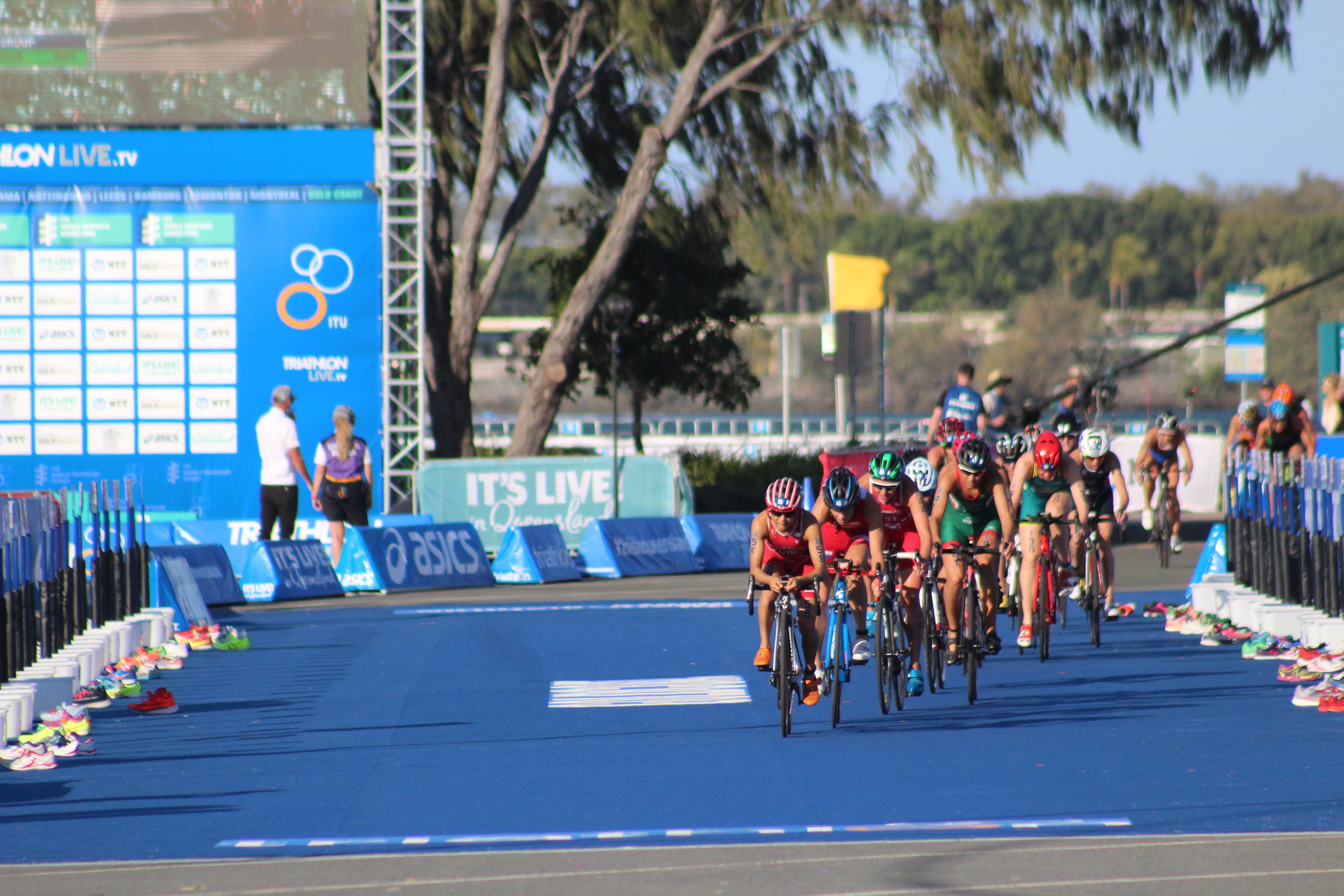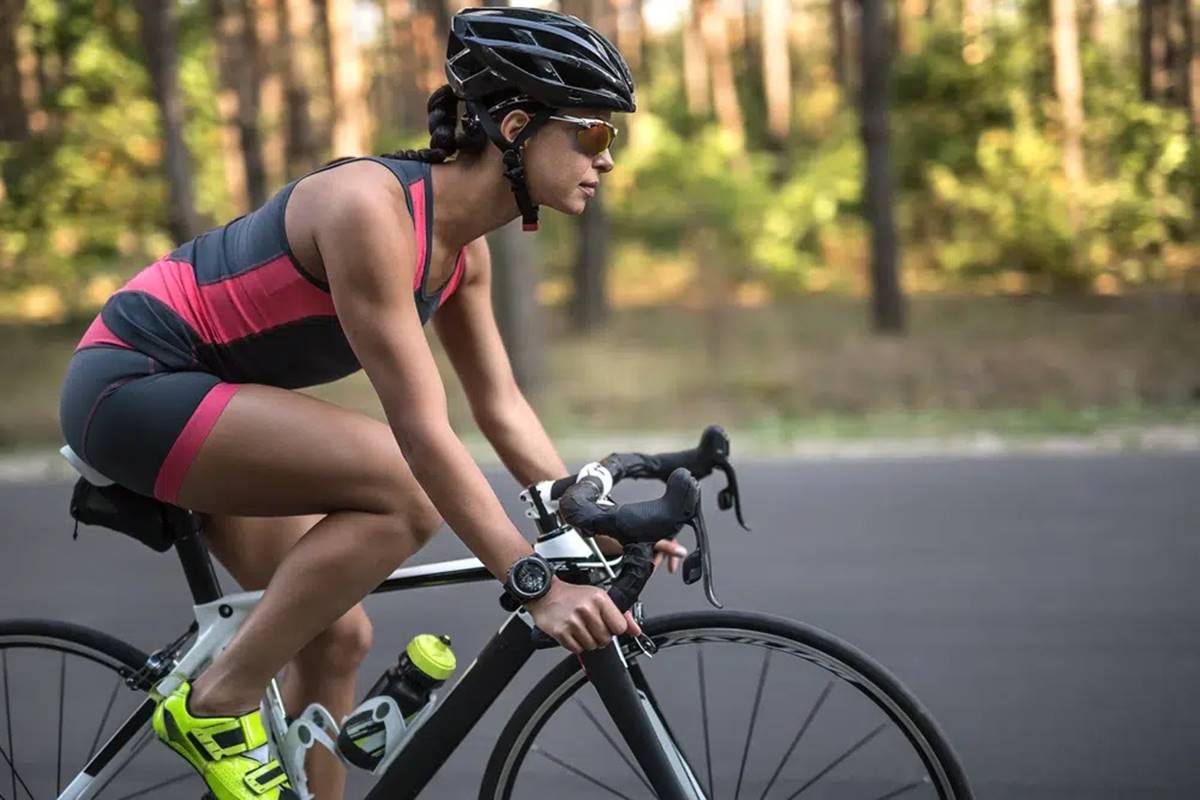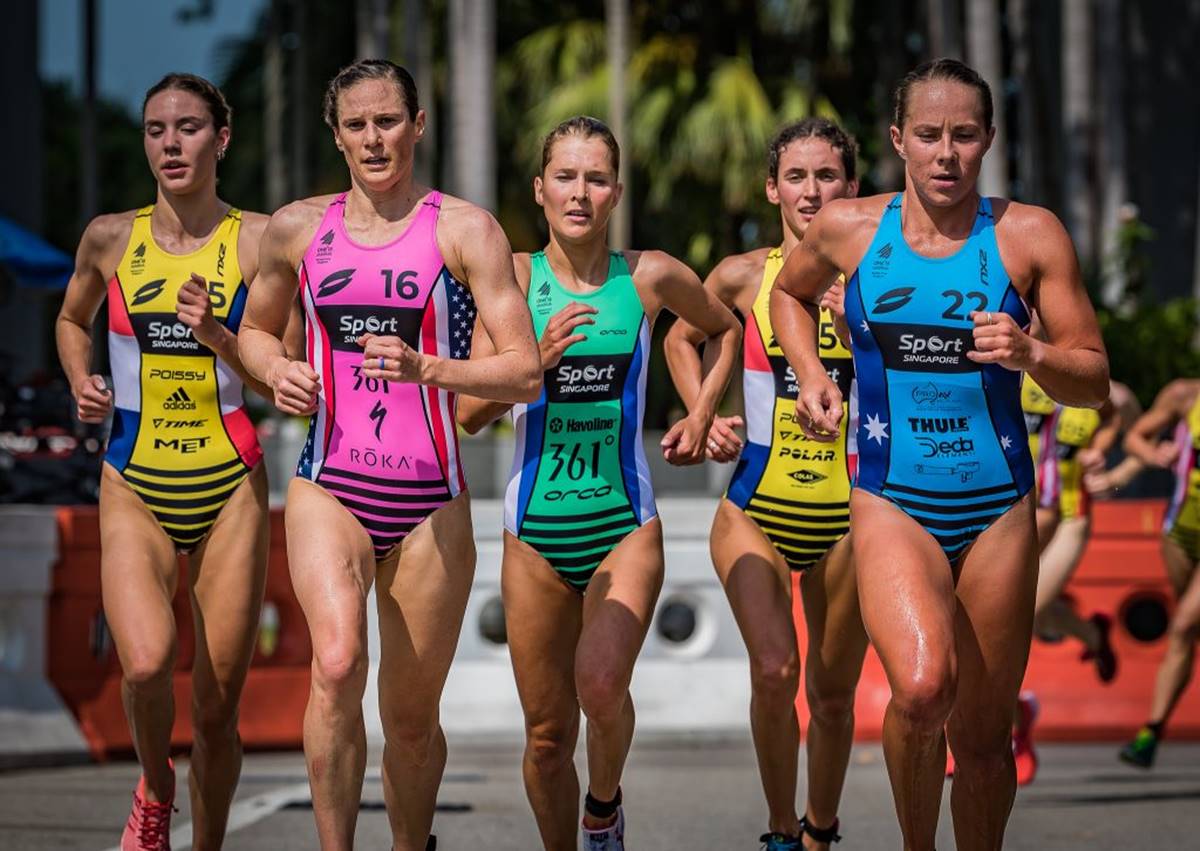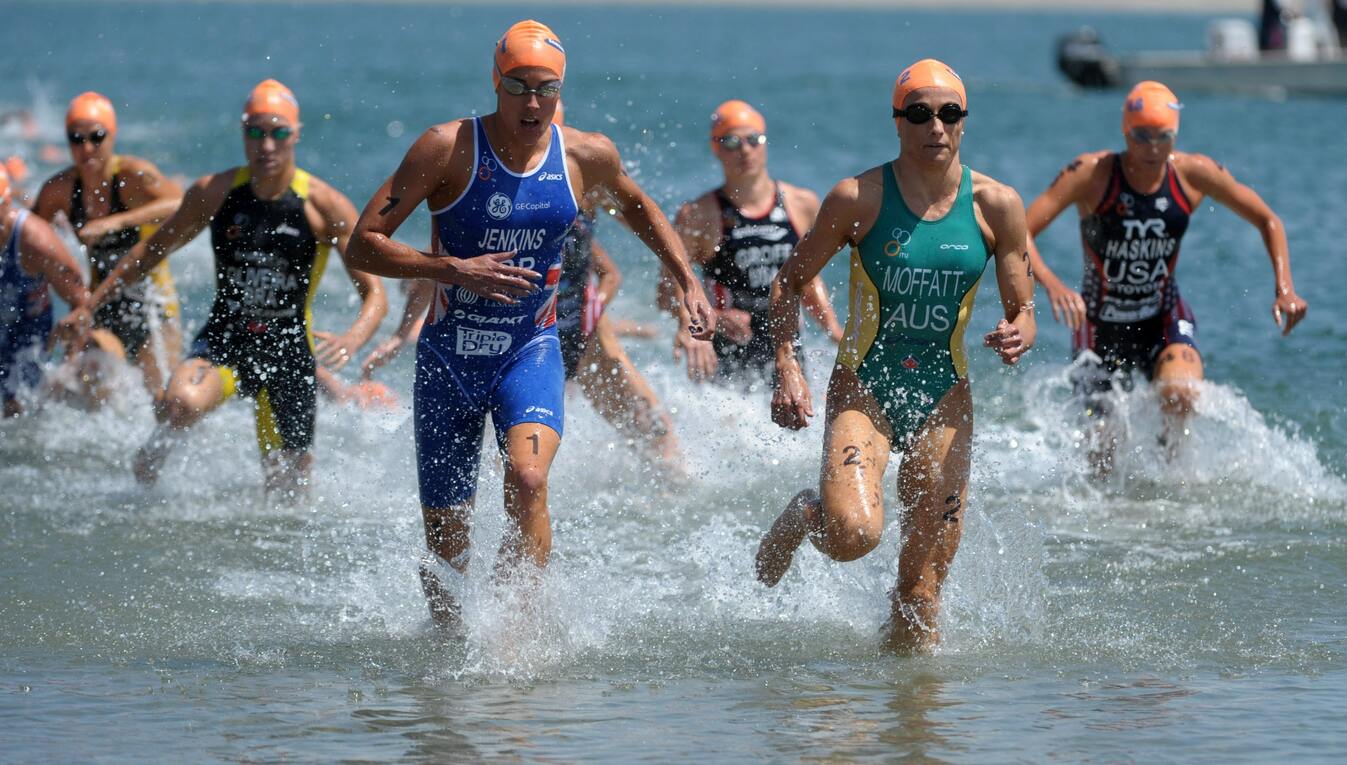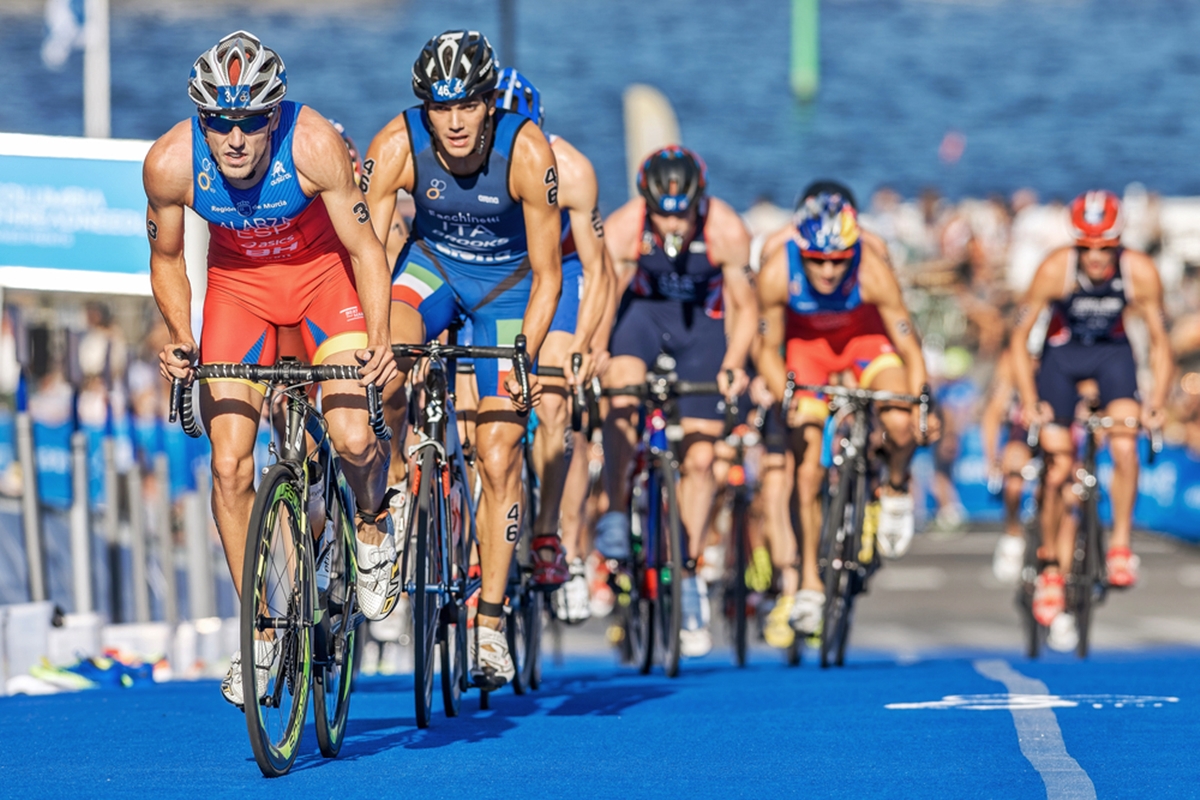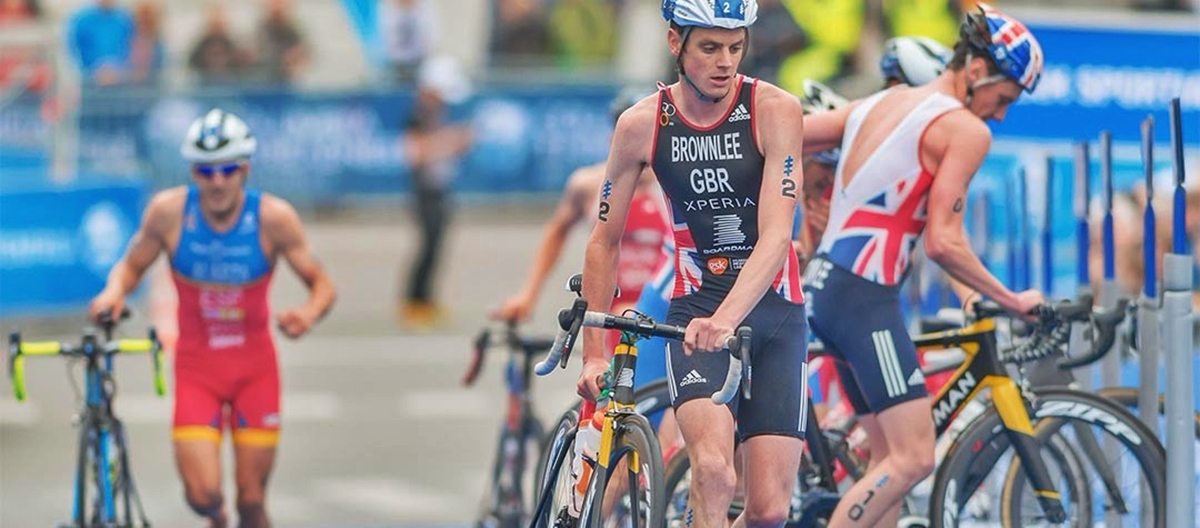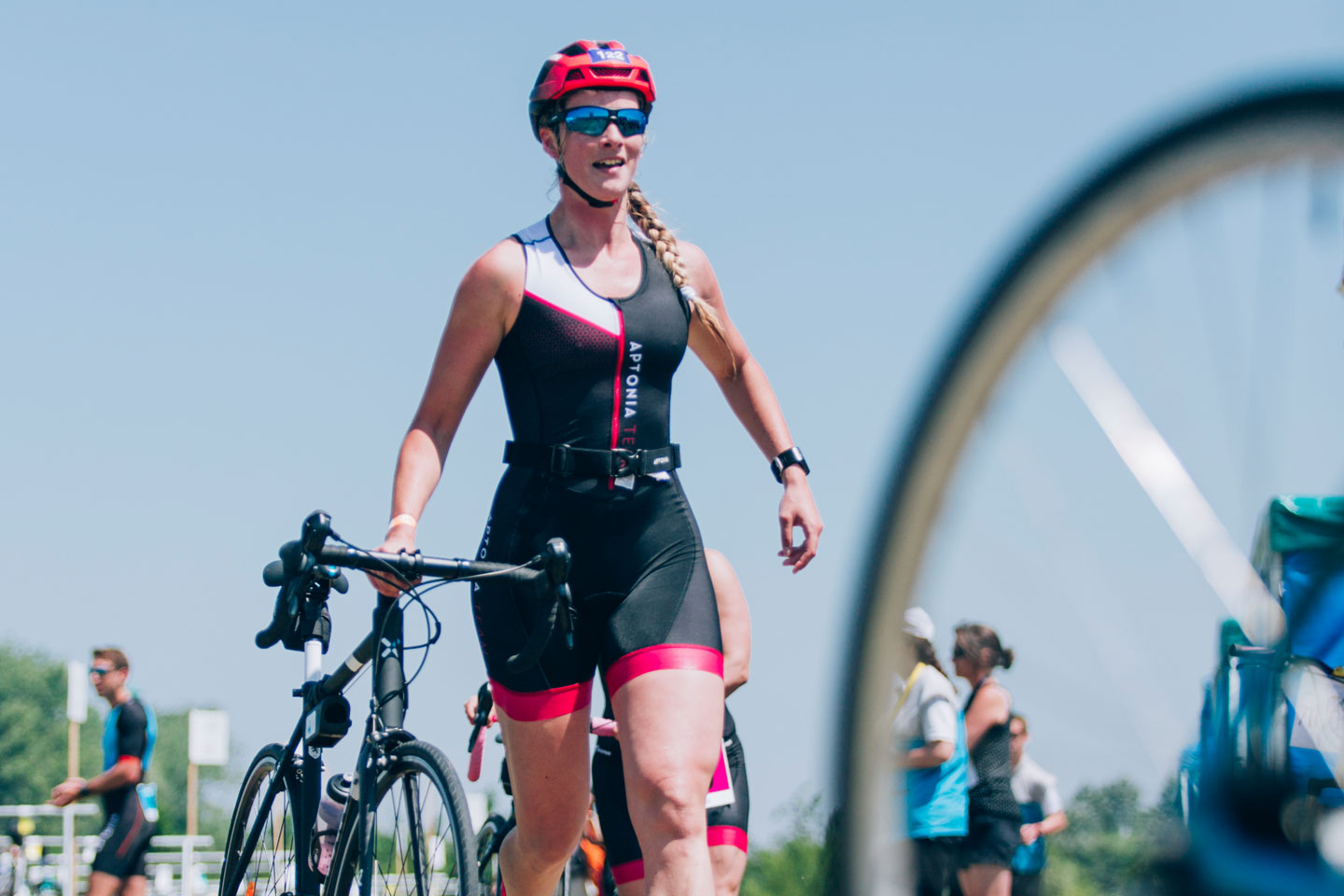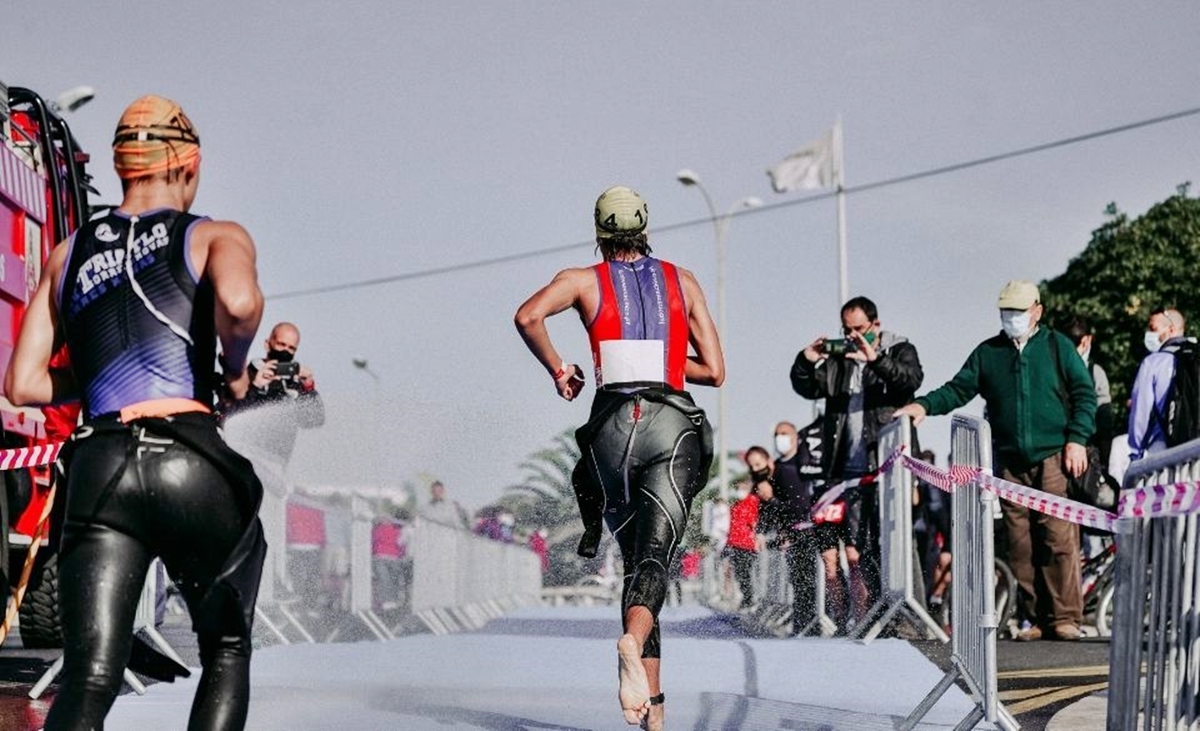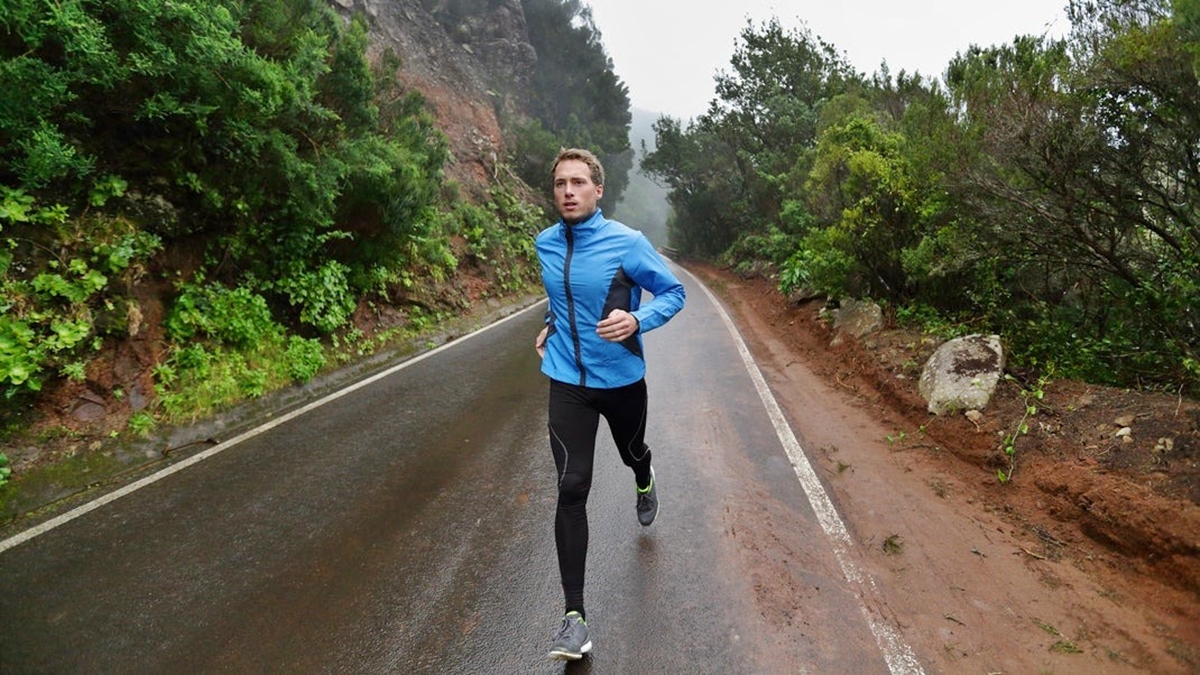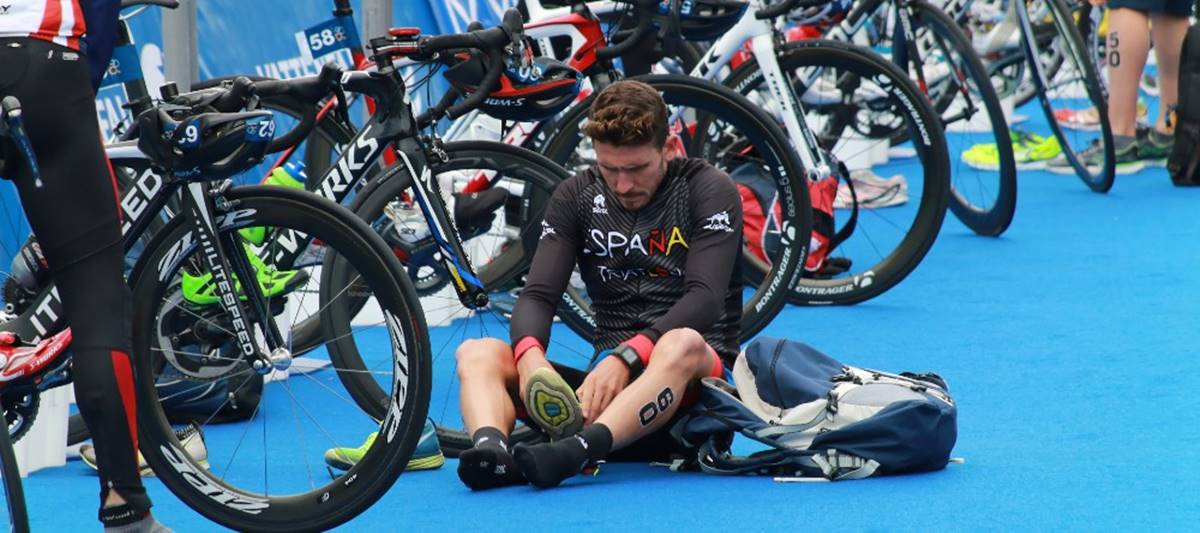

Featured
How Do You Change Clothes In A Triathlon
Modified: October 3, 2023
Looking for tips on how to change clothes during a triathlon? Check out our featured guide on how to seamlessly transition during the race.
Introduction
Triathlons are renowned for their combination of three challenging disciplines: swimming, cycling, and running. Athletes who participate in these events undergo intense physical exertion and must transition quickly between each activity. One crucial aspect of a triathlon transition is changing clothes efficiently.
Changing clothes in a triathlon might seem like a daunting task, especially with the added pressure of racing against the clock. However, with proper preparation and practice, you can master the art of a swift and seamless outfit switch.
In this article, we will guide you through the process of changing clothes in a triathlon and provide valuable tips to optimize your transition time. Whether you’re a seasoned triathlete looking to improve your race performance or a first-timer seeking guidance, this article will equip you with the knowledge and techniques to change clothes effectively during a triathlon.
At first, the thought of changing clothes mid-race might sound time-consuming and unnecessary. However, there are several reasons why triathletes opt for changing during the transition. Changing clothes can help you switch to gear better suited for each discipline and enhance your comfort throughout the race. For example, switching from a wetsuit to cycling shorts can improve mobility and aerodynamics during the bike leg.
Additionally, changing clothes can ensure that you stay dry and comfortable as you progress through the different stages of the triathlon. Wet garments can cause discomfort and chafing, which can significantly impact your performance and enjoyment.
Now that you understand the importance of changing clothes in a triathlon, let’s delve into the details of how to efficiently accomplish this task. In the following sections, we will discuss the triathlon transition area, how to prepare your transition area, choosing the right gear, a step-by-step guide to changing clothes, tips for efficiency, and common mistakes to avoid. By the end of this article, you will feel confident and ready to ace your next triathlon transition.
Understanding the Triathlon Transition Area
The triathlon transition area is a designated area where athletes transition between disciplines. It serves as a hub for changing clothes, swapping gear, and mentally preparing for the next stage of the race. Understanding the layout and dynamics of the transition area is essential for efficient clothes changing.
Typically, the transition area is divided into two sections: the swim-to-bike transition (T1) and the bike-to-run transition (T2). Each section has its own unique setup and requirements.
In T1, located near the swim exit, athletes will transition from swimming to cycling. This area is often marked by rows of racks where participants can hang their bikes. Additionally, there are designated spots for athletes to lay out their cycling gear, including their helmet, shoes, and any necessary accessories.
Once athletes complete the cycling leg, they move on to T2. This area is where the transition from biking to running takes place. Again, there are racks to store the bikes, and athletes can lay out their running shoes, hats, and any other necessary items to ensure a smooth transition.
When entering the transition area, it’s crucial to familiarize yourself with the layout and identify the location of your rack and gear. Take note of any landmarks or distinctive features that will help you locate your belongings quickly during the race. This step is essential for a seamless transition, as it saves valuable time that can make a significant difference in your overall race performance.
Furthermore, it’s essential to understand the flow of traffic within the transition area. During the race, athletes will be entering and exiting the area simultaneously, which can lead to congestion and confusion. Follow the instructions provided by race officials and pay attention to any signage or arrows that indicate the correct direction of travel.
The triathlon transition area can be a bustling and hectic environment, especially during larger races. Practice navigating and familiarizing yourself with the layout of a transition area during your training sessions. This will help you feel more comfortable and confident on race day.
Now that we have covered the basics of the triathlon transition area, let’s move on to the next section, where we will discuss how to prepare your transition area effectively.
Preparing Your Transition Area
Preparing your transition area is a crucial step in ensuring a smooth and efficient clothes changing process during a triathlon. Taking the time to organize your gear and set up your transition area properly can save valuable seconds or even minutes during the race.
Here are some key steps to follow when preparing your transition area:
- Arrive Early: Arrive at the race venue well before the start time to claim a prime spot in the transition area. This will give you ample time to set up your gear and make any necessary adjustments.
- Lay Out Your Gear: Lay out all the clothing and equipment you will need for each section of the race. Group items together based on their intended use to make it easier to locate and access them during the transition.
- Use a Towel or Mat: Place a towel or mat on the ground in front of your gear to create a clean and designated area for changing clothes. This will help keep your feet clean and provide a stable surface for changing footwear.
- Prep Your Shoes: Loosen the laces of your cycling and running shoes to make them easier to slip on quickly. Consider using elastic laces that eliminate the need for tying knots.
- Keep it Simple: Minimize the number of items you bring to the transition area. Only include the essentials to avoid clutter and save time searching for specific items during the race.
- Practice Transitions: Dedicate time during your training sessions to practice transitioning between disciplines. Simulate the race environment by setting up a makeshift transition area and rehearse changing clothes and gear as quickly as possible.
Remember, the goal of preparing your transition area is to make the process as efficient and streamlined as possible. By employing these tips and practicing your transitions, you will be well-prepared come race day.
Now that you know how to set up your transition area effectively, let’s move on to the next section, where we will discuss the importance of choosing the right gear for a successful clothes change during a triathlon.
Choosing the Right Gear
Choosing the right gear for a triathlon is crucial for a smooth and efficient clothes changing process. The gear you select should not only be appropriate for each discipline but also facilitate quick and easy transitions. Here are some key considerations when choosing your gear:
- Triathlon-Specific Clothing: Invest in triathlon-specific clothing that is designed to be lightweight, moisture-wicking, and quick-drying. Triathlon suits are a popular choice as they can be worn throughout the entire race, eliminating the need to change clothes between disciplines.
- Swim Gear: If you opt for a separate swim outfit, make sure to choose one that is comfortable, allows for a wide range of motion, and dries quickly. Consider using a neoprene wetsuit for open-water swims in colder conditions.
- Cycling Gear: Choose cycling shorts or bib shorts that provide comfort and reduce chafing during prolonged periods on the bike. Look for apparel with padding in the seat area for added cushioning.
- Running Gear: Select lightweight and breathable running attire that allows for unrestricted movement. Opt for moisture-wicking fabrics that help keep you cool and dry throughout the run leg.
- Footwear: Invest in cycling shoes and running shoes that offer a secure fit and are easy to slip on and off. Consider using elastic laces that eliminate the need for tying knots, making shoe changes quick and hassle-free.
- Accessories: Don’t forget essential accessories such as a helmet, sunglasses, a hat/visor, and gloves, if needed. Ensure they are easily accessible and properly positioned in your transition area to minimize the time needed to put them on or take them off.
It’s important to note that the gear you choose should be based on personal preference and comfort. Practice using your chosen gear during your training sessions to ensure it suits your needs and allows for smooth transitions between disciplines.
Additionally, consider the weather conditions on the day of the race when selecting your gear. Layering options may be necessary for colder temperatures, while lighter and breathable fabrics are more suitable for warmer climates.
By choosing the right gear that is functional, comfortable, and appropriate for each discipline, you will set yourself up for a successful clothes change during a triathlon.
Now that we have covered the importance of choosing the right gear, let’s move on to the next section, where we will provide a step-by-step guide to changing clothes in a triathlon.
Step-by-Step Guide: Changing Clothes in a Triathlon
Changing clothes efficiently during a triathlon requires practice and a well-thought-out strategy. By following this step-by-step guide, you can streamline the clothes changing process and save valuable time in each transition:
- Plan Ahead: Before the race, visualize the order in which you will change your clothes. Have a clear plan in mind to avoid confusion during the race.
- Swim to Bike Transition (T1):
- As you exit the water, unzip or remove your wetsuit (if applicable) while running towards the transition area.
- At your transition area, dry your feet with a towel and put on your cycling shoes.
- Swiftly put on your helmet and fasten the chinstrap securely.
- Grab your bike and head towards the mount line, smoothly transitioning into the cycling leg of the race.
- Bike to Run Transition (T2):
- Dismount your bike before the dismount line and run into the transition area.
- Remove your cycling shoes and put on your running shoes.
- Switch any necessary accessories, such as sunglasses or a hat.
- Skip any unnecessary steps, such as putting on socks if you are comfortable running without them.
- Once ready, start running towards the run course and continue the race.
Efficiency is key during each transition. Practice these steps during your training sessions to become more familiar and comfortable with the process. Continuously look for ways to improve your speed and minimize the time spent changing clothes.
Remember, the ultimate goal is to minimize the time spent in the transition area while ensuring that you are comfortably dressed for each discipline of the race.
Now that you have a step-by-step guide to changing clothes in a triathlon, let’s move on to the next section, where we will discuss tips for efficient clothes changing during a triathlon.
Tips for Efficient Clothes Changing
Efficient clothes changing can make a significant difference in your overall triathlon performance. By implementing these tips, you can streamline the process and maximize your transition speed:
- Practice Transitions: Regularly practice transitioning between disciplines during your training sessions. Develop a routine and rehearse it until it becomes second nature.
- Stay Organized: Lay out your gear in a logical and organized manner to minimize the time spent searching for specific items. Use separate bags or compartments to keep everything easily accessible.
- Use Zip-Lock Bags: Store smaller items such as socks, race bibs, and accessories in resealable zip-lock bags. This helps keep them organized and prevents them from getting lost or tangled with other items.
- Prep Beforehand: Loosen shoe laces, unfasten straps, and open helmet vents in advance to reduce the time needed for adjustments during the transition.
- Employ Speedy Techniques: Use techniques such as the flying mount/dismount for your bike and the elastic cord method to secure your running shoes. These techniques can save valuable seconds during the transition.
- Minimize Clothing Changes: Opt for triathlon suits or multi-purpose apparel that can be worn throughout the entire race. Minimizing the number of clothing changes reduces the chances of mistakes and maximizes efficiency.
- Consider a Wet Race Kit: If permitted in the race rules, you can pre-swim in your triathlon kit to save time during T1. This allows you to start cycling immediately after exiting the water, bypassing the need to change clothes.
- Stay Focused: During the transition, remain calm and focused on the task at hand. Avoid distractions and unnecessary movements. Maintain a mental checklist to ensure you haven’t missed any essential steps.
- Time Your Transitions: Use a stopwatch or a timer during training to gauge the time it takes for you to complete each transition. Continuously strive to improve your time by making adjustments and refinements.
Remember, practice and experimentation are key to finding the methods that work best for you. Experiment with different strategies, techniques, and gear setups during your training sessions to identify the most efficient approach.
By implementing these tips and honing your transition skills, you can significantly reduce your overall race time and increase your chances of success in a triathlon.
Now that we have covered tips for efficient clothes changing, let’s move on to the next section, where we will discuss common mistakes to avoid during a triathlon transition.
Common Mistakes to Avoid
When it comes to changing clothes in a triathlon, avoiding common mistakes can help you maintain a smooth and efficient transition. By being aware of these pitfalls, you can take proactive measures to prevent them from negatively impacting your race performance.
Here are some common mistakes to avoid during a triathlon transition:
- Poor Planning: Failing to plan and practice your transition routines can lead to confusion and mistakes during the race. Take the time to develop a clear plan and rehearse it consistently in your training sessions.
- Overpacking: Bringing excessive gear and unnecessary items can cause clutter in your transition area and waste valuable time searching for specific items. Pack only the essentials to minimize the chances of confusion.
- Too Many Clothing Changes: Attempting to change into multiple clothing items during a triathlon can be time-consuming and increase the risk of mistakes. Opt for triathlon suits or multi-purpose clothing to reduce the need for frequent clothing changes.
- Poor Gear Positioning: Failing to position your gear correctly in the transition area can result in valuable time wasted searching for items. Take note of where you place each item and ensure they are easily accessible.
- Lack of Familiarity: Not being familiar with the layout of the transition area and the route to your gear can lead to confusion and disorientation. Familiarize yourself with the transition area during pre-race preparations to avoid unnecessary mistakes.
- Losing Focus: Allowing distractions or mental lapses to interfere with your focus during the transition can lead to mistakes and slower transition times. Stay present, calm, and focused on the task at hand.
- Forgetting Gear Checks: Neglecting to check and ensure that your gear is in proper working condition before the race can result in unexpected issues during the transition. Regularly inspect your gear to avoid any unpleasant surprises.
- Ignoring Rules and Regulations: Failure to adhere to race rules and regulations regarding clothing changes and equipment can lead to unnecessary penalties and time-consuming deliberations with race officials. Familiarize yourself with the event rules and follow them diligently.
- Underestimating Transition Time: Failing to allocate enough time for the transition can lead to rushed and inefficient clothes changing. Be mindful of the time you have available and plan your transition accordingly.
Avoiding these common mistakes requires careful preparation, attention to detail, and practice. By staying vigilant and proactive in your approach, you can minimize errors and maximize your efficiency during the triathlon transitions.
Now that we have covered the common mistakes to avoid, let’s move on to the concluding section of this article.
Conclusion
Efficiently changing clothes during a triathlon is a skill that can greatly impact your overall race performance. By understanding the dynamics of the transition area, preparing your gear effectively, choosing the right clothing and equipment, and following a step-by-step guide, you can streamline the clothes changing process and save valuable time.
Remember to practice your transitions regularly, familiarize yourself with the layout of the transition area, and plan ahead to ensure a smooth and seamless clothes change. Incorporate efficient techniques, such as the flying mount/dismount and the elastic cord method, and avoid common mistakes that can hinder your performance.
By implementing the tips provided in this article, you will be well-equipped to optimize your triathlon transition and achieve your personal best. Embrace the challenge, stay focused, and enjoy the exhilaration of competing in a triathlon.
Now it’s time to put your knowledge into action. Prepare, train, and conquer your next triathlon with confidence!
